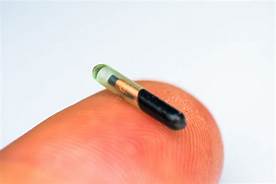How Much Is Pet Deposit: A Comprehensive Guide for Tenants and Landlords
Bringing a furry friend into your rental home is a wonderful experience, but it often comes with an additional cost: pet deposit. Understanding pet deposit fees and navigating the associated policies can be a bit tricky for both tenants and landlords. In this comprehensive guide, we'll shed light on the ins and outs of pet deposits, including how much you can expect to pay, factors that influence the cost, and tips for negotiating a reasonable pet deposit.

Factors Influencing Pet Deposit Costs:
1. Type of Pet: Different types of pets come with varying risks and potential damages to the property. For instance, dogs may be more prone to causing damage to carpets and furniture compared to cats. As a result, pet deposits for dogs may be higher than those for cats.
2. Size of Pet: Larger pets typically pose a greater risk of causing damage due to their size and energy levels. Therefore, pet deposits for larger pets are often higher than those for smaller pets.
3. Breed of Pet: Certain breeds of dogs may be considered more aggressive or destructive than others. Some landlords may require higher pet deposits for these breeds due to perceived higher risks to the property.
4. Number of Pets: Having multiple pets in a rental unit increases the potential for damage and wear and tear. Consequently, pet deposits for multiple pets may be higher than those for a single pet.
5. Rental Property: The condition and type of rental property can also influence the pet deposit amount. For example, a newly renovated apartment may command a higher pet deposit compared to an older, more established unit.
6. Landlord's Policies: Ultimately, the pet deposit amount is determined by the landlord's policies and preferences. Some landlords may set a flat pet deposit fee, while others may consider factors such as the pet's age, temperament, and training.
Negotiating a Pet Deposit: Tips for Tenants:
1. Open Communication: Initiate a conversation with your landlord to discuss the pet deposit. Be transparent about the type, size, and breed of your pet, as well as any steps you're taking to ensure the pet's good behavior.
2. Provide Documentation: If possible, present documents that demonstrate your pet's training, obedience classes, and vaccination records. This can help assure your landlord that your pet is well-behaved and less likely to cause damage.
3. Offer a Compromise: Rather than outright refusing to pay the pet deposit, consider offering a compromise. This could involve agreeing to a lower deposit amount or proposing an alternative security measure, such as an additional insurance policy.
4. Consider Pet Deposit Alternatives: Some landlords may be open to alternatives to a traditional pet deposit. These can include a non-refundable pet fee, increased rent, or a combination of both. Explore these options and find a solution that works for both parties.
Tips for Landlords: Setting a Reasonable Pet Deposit:
1. Research and Market Analysis: Assess the pet deposit rates of similar rental units in your area to ensure your pet deposit is competitive and reasonable.
2. Consider Individual Factors: Evaluate each pet's unique characteristics, such as size, breed, and temperament, when determining the pet deposit amount. This personalized approach can help set a fair deposit that reflects the potential risks.
3. Be Transparent and Communicate: Clearly explain your pet deposit policies to tenants and provide a written pet addendum to the lease agreement. This transparency helps build trust and minimizes misunderstandings.
4. Offer Flexible Options: Consider offering multiple pet deposit options to accommodate different tenant situations. This could include varying deposit amounts for different types and sizes of pets or allowing tenants to choose between a pet deposit and a non-refundable pet fee.
5. Be Willing to Negotiate: Approach pet deposit negotiations with an open mind and a willingness to find a mutually beneficial solution. Collaborative communication can lead to an agreement that satisfies both parties.
In conclusion, pet deposits serve as a safety net for landlords to cover potential damages caused by pets in rental properties. Understanding the factors that influence pet deposit costs and utilizing effective negotiation strategies can lead to reasonable and fair pet deposit arrangements for both tenants and landlords. Always prioritize open communication, transparency, and flexibility to ensure a harmonious and pleasant rental experience for all parties involved.Declaration: All article resources on this website, unless otherwise specified or labeled, are collected from online resources. If the content on this website infringes on the legitimate rights and interests of the original author, you can contact this website to delete it.






